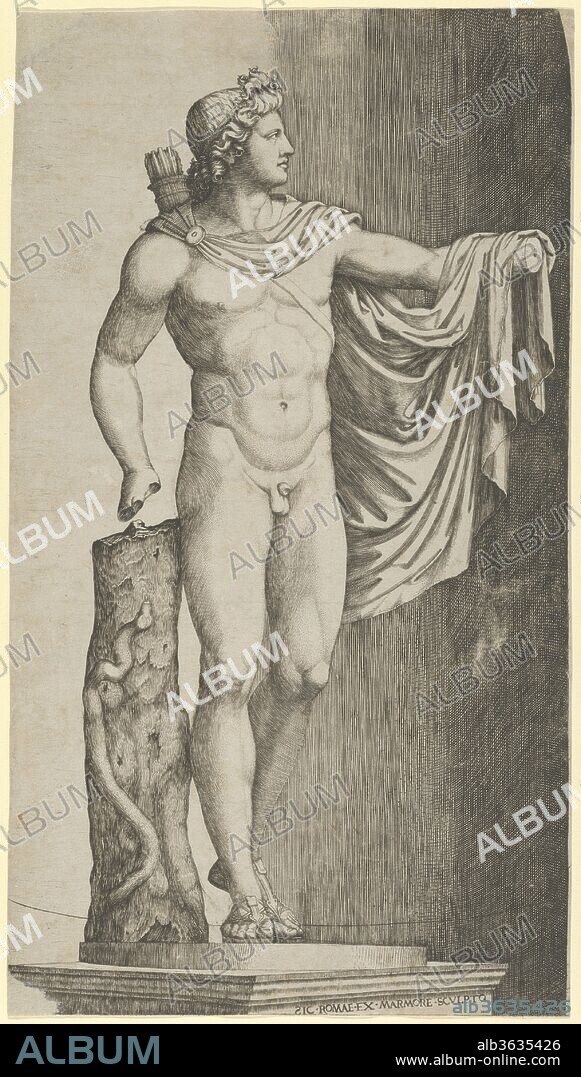alb3635426
MARCANTONIO RAIMONDI. The Apollo Belvedere from the Vatican his left hand resting on the tree trunk around which coils a python

|
Add to another lightbox |
|
Add to another lightbox |



Title:
The Apollo Belvedere from the Vatican his left hand resting on the tree trunk around which coils a python
Caption:
The Apollo Belvedere from the Vatican his left hand resting on the tree trunk around which coils a python. Artist: Marcantonio Raimondi (Italian, Argini (?) ca. 1480-before 1534 Bologna (?)). Dimensions: 11 7/16 x 6 3/8 in. (29.1 x 16.2 cm). Date: ca. 1510-27.
The Apollo Belvedere was discovered near Rome in the late fifteenth century. Possibly a second-century marble copy of a bronze original by the Greek sculptor Leochares, the statue was immediately appreciated as a masterpiece and showered with praise. Probably once in the private collection of Cardinal Giuliano della Rovere (later Pope Julius II, r. 1503-13), it was moved to the Vatican in 1509 and placed, in 1511, in the Cortile del Belvedere, from which it derives its name. Raimondi's print became an important vehicle through which knowledge of the statue was transmitted far beyond the Vatican. He is famous for his many engravings after the designs of Raphael, including images such as the Judgment of Paris (19.74.1), scenes that, like the Apollo, illustrate Renaissance interest in classical antiquity and mythology. Here, Raimondi's mastery for replicating the effects of light on marble produces a convincing impression of the statue's form. Many artists incorporated the Apollo's much-lauded pose into their own work. Albrecht Dürer reverses the position of the figure's limbs and Apollo becomes Adam, reaching for the fruited branch offered by Eve in the 1504 engraving (19.73.1). A similar figure of Apollo, whose outstretched arm grasps--too late--a fleeing nymph, appears in the 1625 marble group Apollo and Daphne by the Roman Baroque sculptor Gian Lorenzo Bernini (1598-1680).
Technique/material:
engraving
Museum:
Metropolitan Museum of Art, New York, USA
Credit:
Album / Metropolitan Museum of Art, NY
Releases:
Model: No - Property: No
Rights questions?
Rights questions?
Image size:
2471 x 4353 px | 30.8 MB
Print size:
20.9 x 36.9 cm | 8.2 x 14.5 in (300 dpi)
Keywords:
 Pinterest
Pinterest Twitter
Twitter Facebook
Facebook Copy link
Copy link Email
Email

